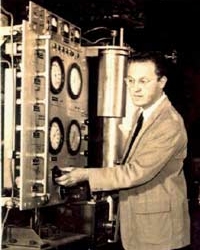Based on the principle of harnessing excess energy available in nature, scientists have successfully developed batteries capable of lasting indefinitely.
For decades, humanity has strived to find clean and inexhaustible energy sources to ensure sustainable energy supply and contribute to combating climate change.

Illustration showing the supplemental energy generated during the use of the primary energy source, creating gravitational batteries. (Photo: LuckySoul/Adobe).
One of the persistent issues greatly affecting energy production is how to capture excess energy to reduce waste and enhance energy efficiency. Recently, scientists have discovered a solution, known as gravitational batteries.
Essentially, this solution relies on the principle of harnessing surplus energy generated from wind, solar, and other renewable energy sources, storing this excess energy in large mass batteries. These batteries are stored at elevated positions above ground, and during the process of descending for use, they generate additional energy thanks to gravity.
But how does this supplemental energy function like a battery? The fundamental idea is actually quite simple. Think about the impact of gravity. When a ball rolls down from the top of a hill, energy is generated because the ball is in motion, and that energy was initially created by the energy used to push the ball from the bottom to the top of the hill. This principle applies to the gravitational batteries we are discussing here.
When we lift large masses up a vertical tunnel, similar to a mine shaft, we consume a certain amount of energy. However, since these masses (such as sand, earth, rocks, or anything else) are raised up high, we can let them fall to generate additional energy. Thus, although it is not a standard type of battery, a gravitational battery can still function as an energy storage solution, just not in the way we typically envision.
Usually, scientists refer to this energy as potential energy, which is not electricity in its essence, but it can be easily converted from the motion of gravitational batteries into electrical energy and transmitted to power lines for distribution to where it’s needed. This is a unique and innovative idea, but such ideas often drive scientific breakthroughs in our civilization.
This is not the first time gravity has been utilized to recharge batteries. A train designed to run perpetually also employs a similar type of gravitational battery, recharging whenever the train travels from a high point to a low point, allowing it to operate as long as there are locations along its route to recharge the batteries.





















































